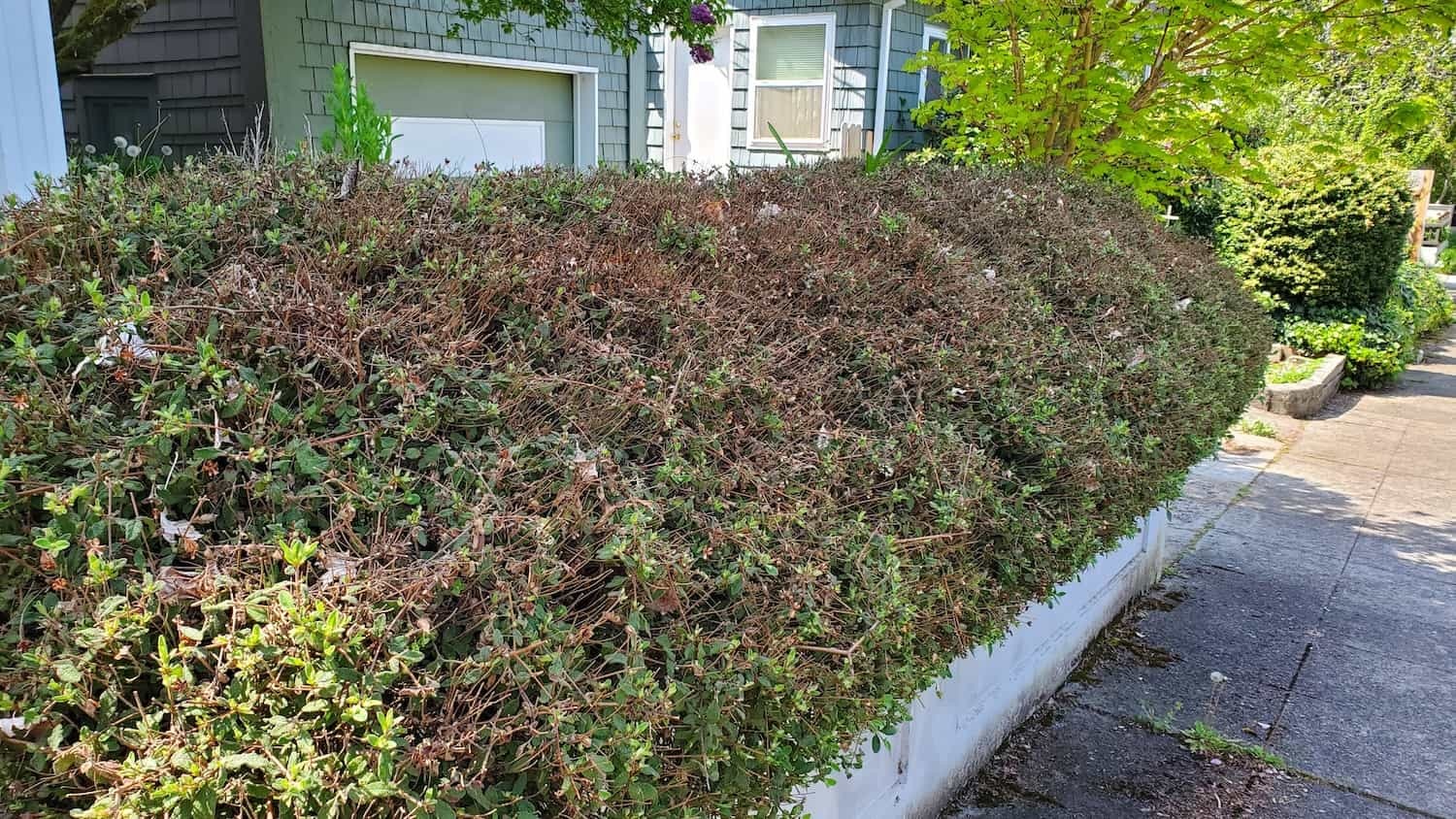Brush Ground ivy eradication
Homeowner’s Issue
Brush yards deal with a specific set of headaches: wet winters, compacted soils, and shady corners that favor ground ivy (creeping Charlie), moss, and persistent weeds. Heavy seasonal rainfall and pockets of clay or loam combined with limited sun on north- or tree-shaded slopes make lawns thin and give ground-cover weeds an easy foothold. Poor drainage on inclines and near driveways allows mats of green to spread fast, and HOA curb-appeal expectations mean small infestations become eyesores quickly.
Many Brush homes also sit near greenbelts and park corridors where seed and runners are constant, and older soil often lacks the organic life to support dense turf. Typical problems we see: patchy grass, ivy creeping into beds, slippery walkways in the rainy months, and neighbors asking why your yard looks tired. Property access (steep driveways, narrow side yards) can affect treatment choices. Our approach for Brush focuses on improving soil health, managing water flow on slopes, and establishing low-maintenance plantings that outcompete ground ivy without relying on chemical herbicides.
Our Quality Service
We remove ground ivy using sustainable, hands-on methods that suit Brush conditions. That means targeted hand-pulling, mechanical edging, spot-clearing, soil improvement, and organic follow-up care to keep the problem from returning. We prioritize erosion control on slopes and improve drainage where recurring wetness feeds weeds.
Benefits:
- Safer, neater walkways and yards that reduce slipping in wet months.
- Better curb appeal with lasting results rather than short-term fixes.
- Low-maintenance landscapes that save time and water.
- Methods that protect kids, pets, and nearby parks like local greenbelts.
What’s Included
- Property assessment and mapped problem areas.
- Manual removal and mechanical dethatching of ground ivy.
- Soil aeration or light tilling where needed to break mats.
- Overseeding with shade- and drought-tolerant mixes.
- Mulch placement and bed edging to prevent re-invasion.
- Green waste haul-away or placement in your green bin (your choice).
Options/upgrades:
- Mulch + landscape fabric for high-traffic beds.
- Organic weed-control follow-ups (no herbicides).
- Soil testing and compost/top-dressing.
- Reseeding or sod patches for bare spots.
Before & After / Expectations
Be upfront: removal work can be noisy and produce organic debris. We’ll need clear access to side yards and driveways and a short window after rain for best results. Expect a visible improvement after the first visit, with follow-ups to catch runners and seedlings.
Care tips for Brush yards:
- Keep mower height a bit higher to shade soil and discourage weeds.
- Water deeply but infrequently; morning watering reduces moss.
- Mulch beds annually and pull new runners early in the season.
- Consider shade-tolerant groundcovers where grass won’t establish.
FAQs
- How long does treatment take? Most small yards need a single full-day visit plus 1–2 short follow-ups over 6–12 weeks.
- Do you use chemicals? No — we use organic and mechanical methods only, tailored for Brush conditions.
- What about steep slopes? We use erosion-control mulches, fabric options, and planting strategies to stabilize slopes safely.
- Will it come back? With soil improvement, mulch, and the follow-up plan we recommend, recurrence is much reduced.
Call to Action
Brush homeowners: book a free estimate and we’ll walk your property, point out drainage fixes, and outline a sustainable plan that fits your schedule. Fast scheduling, dependable crews, and local experience make the difference.
Email: neatandtidyseattle@gmail.com
Phone: 206-538-9344
Licensed • Bonded • Insured










